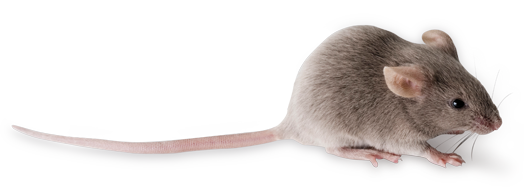
DBA mice, particularly the DBA/1 and DBA/2 strains, are among the oldest and most widely used inbred mouse strains in biomedical research. They have unique genetic and phenotypic characteristics that make them valuable for studying various diseases and biological processes. Below is a detailed explanation of how DBA mice are produced and their applications in bioresearch.
1. Production of DBA Mice
DBA mice were first developed in the early 20th century through selective breeding and genetic manipulation. Here’s how they are produced:
Genetic Basis : The DBA strain originated from mice carrying three recessive genes: dilution (d), brown (b), and non-agouti (a), which affect coat color. These genes were identified by Clarence Cook Little in 1909, who established the first inbred mouse strain, initially named dbr and later renamed DBA (Dilute Brown Non-Agouti).
Substrains : Over time, the DBA strain was divided into two main substrains, DBA/1 and DBA/2, due to genetic divergence. These substrains differ in several genetic loci, including the MHC haplotype (H2q for DBA/1 and H2d for DBA/2), which influences their immune responses.
Breeding Strategy : DBA mice are maintained through strict inbreeding to preserve their genetic homogeneity. They are typically bred in specific pathogen-free (SPF) environments to prevent infections and ensure research reproducibility.
2. Applications in Bioresearch
DBA mice are widely used in biomedical research due to their unique genetic and phenotypic traits. Below are their primary applications:
A. Immunology and Autoimmune Diseases
Collagen-Induced Arthritis (CIA): DBA/1 mice are commonly used to model rheumatoid arthritis. They develop severe joint inflammation when immunized with type II collagen, making them ideal for testing anti-inflammatory drugs and studying autoimmune mechanisms.
Immune-Mediated Nephritis : DBA/1 mice can develop kidney inflammation when exposed to collagen, providing a model for studying autoimmune kidney diseases.
B. Neuroscience and Behavioral Studies
Age-Related Hearing Loss: DBA/2 mice exhibit progressive hearing loss due to mutations in the Cdh23 gene, making them a valuable model for studying auditory degeneration and potential therapies.
Epilepsy Research: DBA/2 mice are highly susceptible to audiogenic seizures, making them a useful model for studying epilepsy and testing anticonvulsant drugs.
C. Cancer Research
Spontaneous Tumors: DBA/2 mice have a high incidence of spontaneous mammary tumors, particularly in breeding females, making them a model for studying breast cancer and tumor biology.
Tumor Transplantation: Due to their immunodeficient characteristics, DBA mice are often used for xenograft studies, where human tumor cells are transplanted to study cancer progression and treatment.
D. Cardiovascular and Metabolic Studies
Atherosclerosis: DBA/2 mice develop atherosclerosis when fed a high-fat diet, providing a model for studying cardiovascular diseases and testing lipid-lowering therapies.
Cardiac Calcification: Older DBA/2 mice develop spontaneous calcification in the heart, which is useful for studying age-related cardiovascular conditions.
E. Ophthalmology
Glaucoma: DBA/2 mice develop pigmentary glaucoma, characterized by iris atrophy and increased intraocular pressure, making them a model for studying glaucoma and testing neuroprotective therapies.
3. Unique Characteristics of DBA Mice
Behavioral Traits: DBA/2 mice exhibit low alcohol preference and high shock-avoidance learning, making them useful for studying addiction and behavioral neuroscience.
Sensitivity to Toxins: DBA mice are highly sensitive to certain toxins and pathogens, such as Mycoplasma fermentens and Plasmodium berghei, making them valuable for infectious disease research.
4. Challenges and Considerations
Fragile Health: DBA mice are prone to infections and require strict SPF conditions for housing.
Genetic Variability: Although inbred, DBA/1 and DBA/2 substrains have significant genetic differences, which can affect experimental outcomes.
Limited Lifespan: DBA mice have a shorter lifespan compared to other strains, which can limit long-term studies.
5. Conclusion
DBA mice, particularly the DBA/1 and DBA/2 substrains, are indispensable tools in biomedical research. Their unique genetic makeup and phenotypic traits make them ideal for studying autoimmune diseases, cancer, neuroscience, and cardiovascular conditions. However, their care requires meticulous attention to housing conditions and experimental design to ensure reliable and reproducible results.